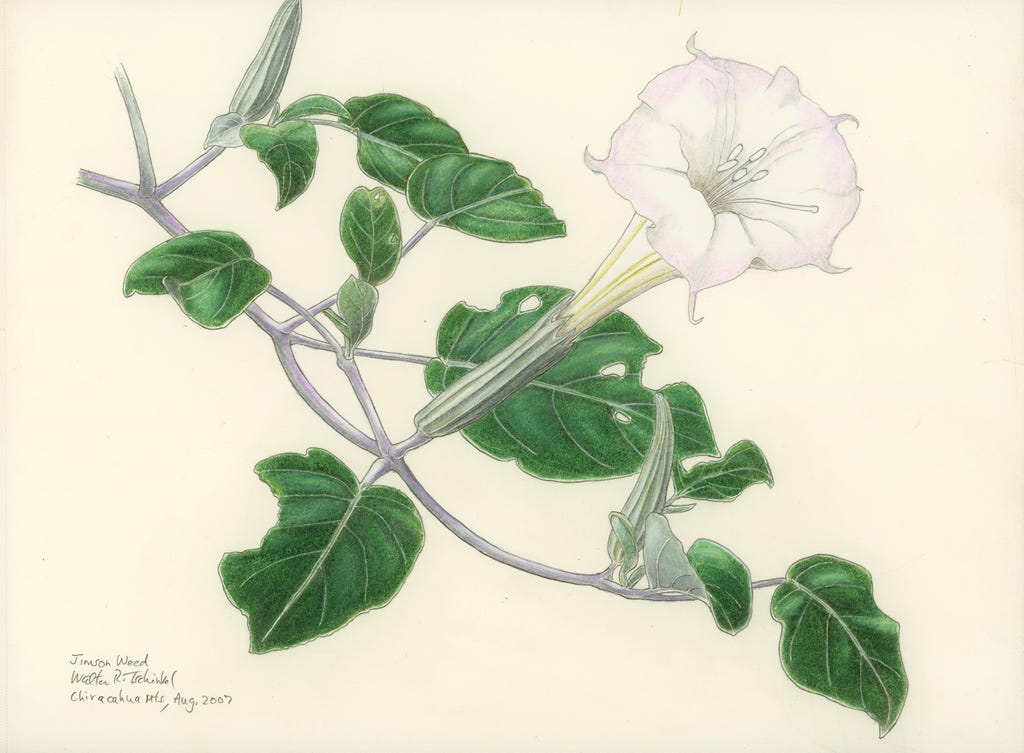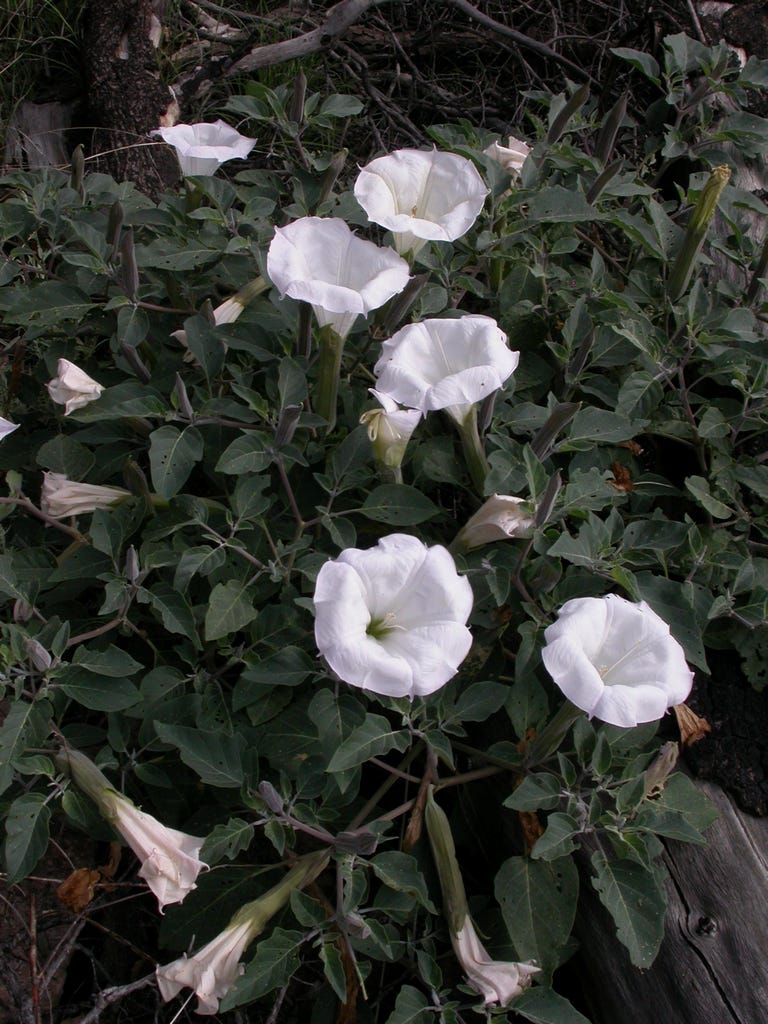If you like to play Russian roulette, but don't own a revolver, here's a botanical way you can play this fun game--- get high (or dead) on Jimsonweed, aka Datura stramonium. Jimsonweed is a common weed in North America and has been naturalized in many other parts of the world, lucky for them. The plant has a rank smell, a beautiful trumpet-shaped flower that is pollinated by moths at night. Even when plants all around are sere and brown, Datura is often lush and green, but the fun part is that all parts of the plant are stuffed with hallucinogenic, deliriogenic alkaloids, including atropine, hyoscyamine and scopolamine. In traditional cultures, Datura was used ceremonially, but then again, we can presume that somebody in that crowd knew what they were doing. Which most of us don't.
So, should you be looking for a nice high, here is what you would be up against. First, the hallucinogenic dose of these alkaloids is very close to the lethal dose. Oops, too bad. Second, if you think tachycardia, hyperthermia, bizzare behavior, delirium, amnesia and extreme, painful light sensitivity lasting for days are fun, by all means, be my guest. Third, yes, all parts of the plant are toxic, but the variation of alkaloid content among plants can be several-fold, depending on season, site and weather. And fourth, more daunting still, the leaf to leaf, or seed capsule to seed capsule variation of alkaloids within the plant can also be several-fold, so that had you chewed a seed from this capsule rather than that, or made an infusion of that leaf rather than this, the amount of toxic alkaloid could be several times greater than you bargained for. Fifth, add to all this variation the fact that the ratio of atropine to scopalamine can vary several-fold, both in different parts of the plant, and in different ages of plant. The upshot here is that "crap shoot" doesn't even begin to describe the chances you are taking when you ingest Datura in any form. The word "stupid" comes to mind.
Yet, there has been a long, solid tradition of stupidity in the USA, for in the late 19th century, Jimson weed tea poisoning was epidemic, and was of such a concern that the US government commissioned the first study of the chemistry of the toxic principles in Datura.
The name Jimsonweed derives from Jamestown, Virginia where a bunch of British soldiers sent in to quell a rebellion in 1676, perhaps being early adherents of the "healthful eating" rage, cooked up a large pot of fresh Datura greens and spent up to 11 days in "an altered mental state" described by their officer as "pleasant comedy." The men remembered nothing of their antics, but one supposes that had they not boiled the greens first, the comedy would not have been nearly so pleasant.
Ultimately, scopalamine and atropine were isolated in pure chemical form, and became a useful part of the pharmacopoeia (been to the eye doctor lately, or used a motion-sickness patch?). The World Health Organization rates both atropine and scopolamine as “essential medicines.” Presumably, medical administration of these alkaloids (as best I know) no longer results in life-threatening or consciousness-altering outcomes. But of course, when you start with the pure stuff, dosing is easy. If you leave the dose to the plant, you are a fool.






I became kind of enchanted with this plant after moving to Arizona (but not intoxicated or dead). I'm growing four big ones in pots around my yard right now. I even like the "rank" smell of the vegetation, but the perfume of the flowers has crowd appeal. It was nice to be reminded of the pharmacological uses of scopolamine. I had not thought about that since undergrad. I'm also a big fan of the closely related Brugmansia Angel trumpets, but I haven't been able to grow them in the desert. The best Angel trumpet specimens I've ever seen grew outside of the student dining hall at FSU west of Bio Unit 1.